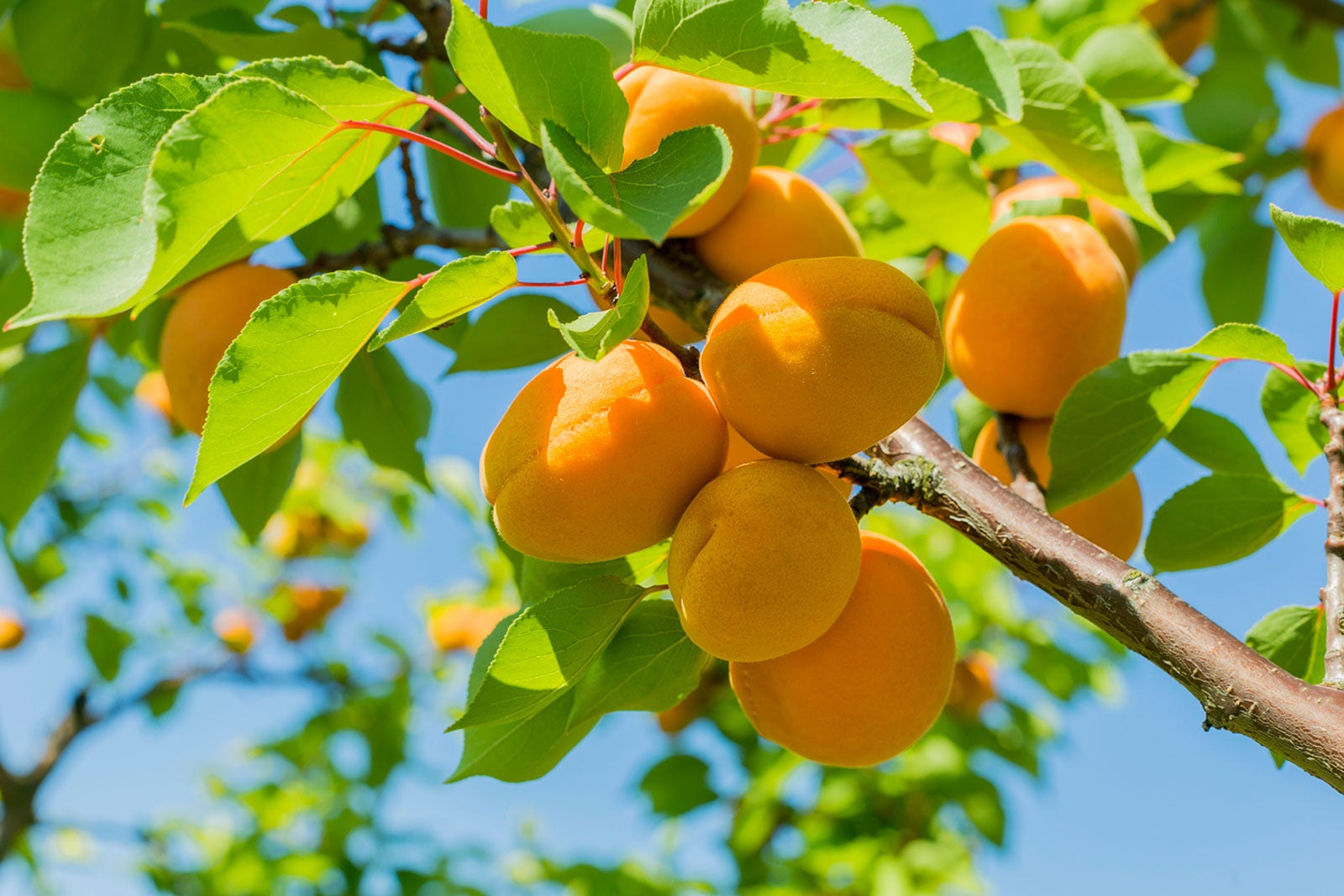Feeding Apricot Trees: When And How To Fertilize An Apricot Tree


Apricots are little juicy gems you can eat in about two bites. Growing a couple apricot trees in your backyard orchard is not difficult and can provide you with an abundant annual harvest. There are a few things you’ll need to know, like why feeding apricot trees is important and how or when to do it to ensure healthy, productive trees.
Growing and Fertilizing Apricots
Apricot trees can be grown in USDA zones 5 through 8, which includes most of the U.S. They are more susceptible to spring frost damage than peaches and nectarines, though, and may suffer from very hot summers. Apricots need full sun and well-drained soil, but they do not need pollinators. Most varieties are self-pollinating, so you can get away with growing just one tree.
Fertilizing apricots is not always necessary. If you see adequate growth in your tree, you may not need to feed it. Good growth is 10 to 20 inches (25 to 50 cm.) on new growth for young trees and 8 to 10 inches (20 to 25 cm.) for mature and older trees each year.
When to Feed Apricot Trees
Do not fertilize your young apricot tree in its first year or two. After that, when the tree has begun to bear fruit, you may use a nitrogen fertilizer or one that is specific to stone fruit during the spring blooming season. Avoid application of apricot fertilizer later than July.
How to Fertilize an Apricot Tree
Fruit trees are more likely to need nitrogen if they need any feeding at all. This is usually the limiting factor in nutrients. In sandy soil, apricots may become deficient in zinc and potassium. It’s not a bad idea to test your soil before fertilizing. This will give you a better idea of what your soil and tree actually need. Contact your local extension office for a soil analysis.
If you do need to feed your trees, apply about one half to one cup (118 to 236 ml.) of fertilizer for young trees and one to two cups for mature trees. Also, check the application instructions for the specific fertilizer you are using.
Apply the fertilizer along the dripline and water it immediately into the soil to avoid nutrient loss. The dripline is the circle around a tree under the tips of branches. This is where rain drips down to the ground and where the tree will best absorb the nutrients applied.
Gardening tips, videos, info and more delivered right to your inbox!
Sign up for the Gardening Know How newsletter today and receive a free copy of our e-book "How to Grow Delicious Tomatoes".

Mary Ellen Ellis has been gardening for over 20 years. With degrees in Chemistry and Biology, Mary Ellen's specialties are flowers, native plants, and herbs.
-
 Terrifically Tubular Flowers For Hummingbirds: 9 Tube-Flowered Plants To Attract Hummers
Terrifically Tubular Flowers For Hummingbirds: 9 Tube-Flowered Plants To Attract HummersGrowing tubular flowers for hummingbirds helps you create the optimum feeding conditions for your winged friends. Here are nine tubed delights for hummers
By Tonya Barnett
-
 How To Grow Hydroponic Tomatoes For Fresh Indoor Harvests – No Soil Required
How To Grow Hydroponic Tomatoes For Fresh Indoor Harvests – No Soil RequiredLearning how to grow tomatoes in water is easy and allows you to harvest fresh-home-grown produce in every season without any mess.
By Ellen Wells